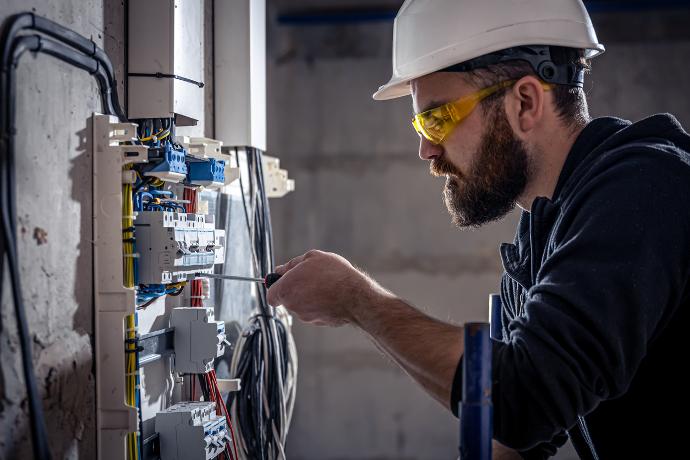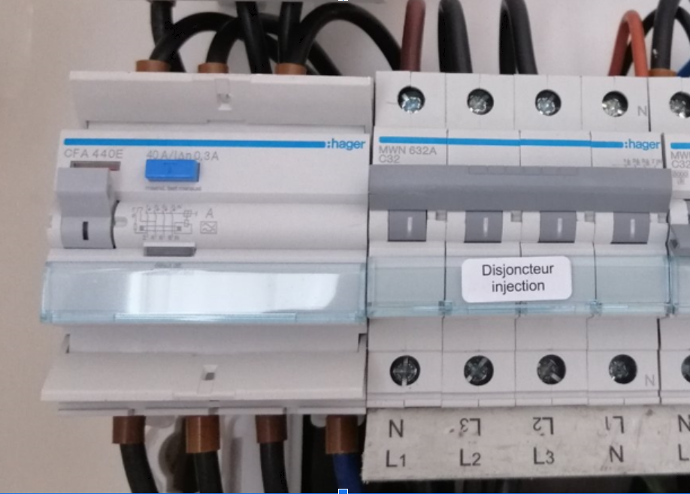If you have installed solar panels (or are planning to do so), you may already have heard of "reinjection protection" or "injection" ?
If you're wondering what it is, then this article is for you! The reinjection protection is a circuit breaker (a "protection") placed in your electrical panel which ensures that the sum of the currents supplied by your meter and your photovoltaic installation (injection) does not exceed the maximum current allowed in the electrical panel.
In French, what does "reinjection protection" actually mean ?
When an electrical installation is built, it is "sized" according to certain criteria for safety reasons :
- Cables must have sufficient cross-sections to support the expected currents without overheating.
- Certain components are designed for a maximum current that cannot be exceeded without risking damage to the component. The size of these various components is determined by the maximum current that the meter can supply. This meter is the main source of current for the electrical installation.
When solar panels are installed, they effectively add a second source of current to the existing electrical installation. From that point on, you have to ask yourself the following question: is the electrical installation capable of handling the current from these two sources? In most cases, the answer is no.
Let's take an example
Your general meter supplies a maximum current of 32 amperes. Solar panels are added, which provide a maximum current of 16 amperes. The maximum current possible in the electrical installation is therefore 32 + 16 = 48 amperes.
At this point, you need to check whether the electrical installation, which was designed to handle 32 amps, is also capable of handling 48 amps.
If the electrical installation is not capable of handling the new current, what should be done ?
In this case, there are two solutions :
- Either the electrical installation is sized to withstand the new current ;
- Or we install a "re-injection protection" which will ensure that the maximum current in the electrical installation is limited and that the installation remains safe.
How to install the re-injection protection ?

For this protection to be effective, it must be wired correctly: upstream, the two current sources (the general meter and the photovoltaic installation) must be connected in parallel in the terminal blocks; downstream, the entire electrical installation must be supplied by this feedback protection.
What nominal current should you choose for this feedback protection ?
There are two options here :
- Either we opt for 100% safety and choose the same current as the general meter as the rated current. This option has the advantage of being 100% certain that the inspector for the RGIE check will see this protection as "compliant" because it is directly aligned with what already exists: there is no possible doubt. It also has the slight advantage that you can never "take advantage" of a possible higher current in the electrical installation.
- Alternatively, you can rely on the calculations and choose as the rated current the maximum current that the electrical installation can withstand according to the components that have been installed. In this case, if an error is made, the inspector could declare the installation to be non-compliant. The only slight advantage would be to be able to occasionally take advantage of a higher current in the electrical installation.
As a private individual interested in solar panels, what should I look out for ?
If you are planning to install photovoltaic panels, check with your sales representative and/or on the day of installation that this problem has been properly addressed. Be sure to ask them if the new maximum current has been calculated and what they have planned as a solution (1 or 2 above).
If you have already had your solar panels installed, check that this protection is present in your electrical panel (see picture), or calculate the maximum possible current in your electrical panel yourself. If necessary, contact your installer.

If you have any questions on the subject, we'll be happy to help.
